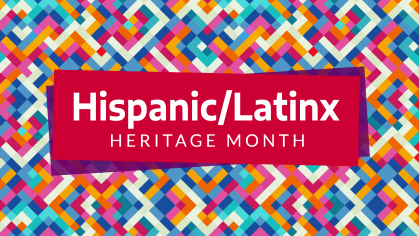Looking Back at the Building an Inclusive Academy Symposium
The racial reckoning of 2020 renewed the push for higher education to challenge implicit biases that are reflected in the imbalances of who is present and who is successful on our campuses. Rutgers University President Jonathan Holloway has committed Rutgers to do the work of repair, creating the Office of the Senior Vice President for Equity to "send a clear signal of our institutional values and investments."
Guided by the belief that excellence is born out of a commitment to diversity, we have embarked on a diversity strategic planning process that will help us to pursue inclusive excellence - adopting a cohesive, coherent, and collaborative integration of diversity and inclusion into the institutional pursuit of excellence.
The Building an Inclusive Academy Symposium, hosted on January 29, 2021, by the Office of the Senior Vice President for Equity, served as a forum to understand why pursuing an inclusive academy is important and explore ways through which it can be achieved. Featured speakers Nancy Cantor, Shirley Malcom, Tania LaViolet, Earl Lewis, and Sherri-Ann Butterfield spoke to the challenges of the academy and what we can do to make it more inclusive. A brief recap of each session is provided below.
President Holloway opened the event with a welcome and shared, "as progressive as many people think America's higher education is, we still have much work to do to make it truly inclusive at all levels."
Rutgers Senior Vice President for Equity Dr. Enobong “Anna” Branch moderated the opening session on Our Compelling Interests, featuring Dr. Cantor and Dr. Lewis, which explored the old and new ways in which academic institutions talk about and work towards inclusion. “Scholars and historians used to talk about the ‘melting pot’ as if that were indeed the frame and framework by which we would judge success. That was an assimilationist model of American inclusion,” said Lewis. “And then certainly we moved from that metaphor of the melting pot to the salad bowl. So the lettuce, tomatoes, avocados, cheese and whatever else could all stand alone as individual items, but when blended together, they created something else.”
Dr. Cantor noted that having a critical mass of diverse students is important to help shape how we talk about students. “People don’t appreciate talent and diversity unless they see within-group variation that’s as strong as between-group variation,” said Cantor. “You have to have enough critical mass so that no individual is assimilative to the representative of that simplified group.”
LaViolet, from the American Talent Institute (ATI), gave a presentation on the organization’s mission to attract, enroll and graduate 50,000 low to moderate-income students across the high-graduation rate sector of colleges and universities by 2025. Rutgers, an ATI member, enrolls more low-income students than other ATI institutions (30% vs. 23%) and graduates low-income students at nearly the same rate as its general student population (78% vs 80%).
LaViolet was joined by Dr. Butterfield to talk about enhancing equity for low-income students, transfer students, and students of color. Butterfield noted that “it’s not enough to get them (students) in, we have to get them through.” LaViolet added, “We have to figure out how to match our systems to what students need. That’s not easy work, but COVID has really shed a light on how important it is that we do this work”.
The final session of the symposium began with a pre-recorded talk by Dr. Malcom titled, “Making Equity and Inclusion Normative,” in which she suggested that the academy needed to stop relying on special programs and a few champions, with limited financial resources, to do the work of change that the institutions themselves should be tackling. Following the talk, Dr. Branch and Dr. Malcom engaged in a conversation that explored why the academy is in need of transformation. Dr. Branch asked, "what would you say to those who believe there is no problem?" Dr. Malcom responded, “What would make you think that you don’t have a diversity or inclusion problem if your student population doesn’t look like your state, or your faculty doesn’t look like your student population?”
“The academy didn’t start from an inclusive place," Branch noted, "It is an exclusive institution by definition. So in order to build an inclusive academy, it’s going to require work and intention.”
Dr. Branch closed the event with a call-to-action for the Rutgers community to engage in the diversity strategic planning process and help move the university from ideals to action.
To find resources that explore and inform on how to challenge and transform the academy, visit the Building an Inclusive Academy reading list.


